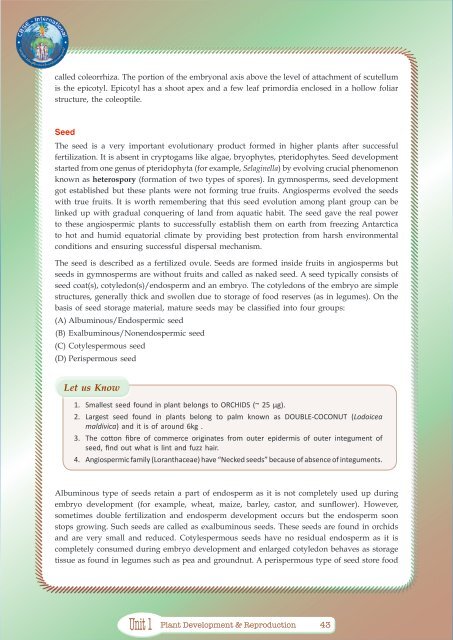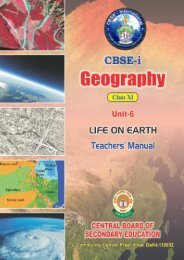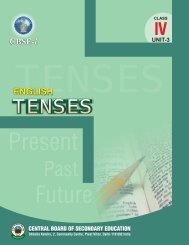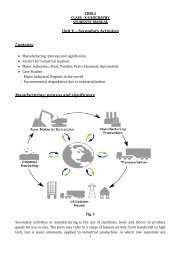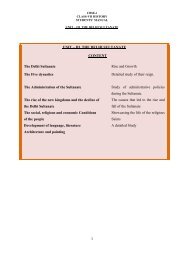PLANT DEVELOPMENT & REPRODUCTION - CBSE International
PLANT DEVELOPMENT & REPRODUCTION - CBSE International
PLANT DEVELOPMENT & REPRODUCTION - CBSE International
Create successful ePaper yourself
Turn your PDF publications into a flip-book with our unique Google optimized e-Paper software.
called coleorrhiza. The portion of the embryonal axis above the level of attachment of scutellumis the epicotyl. Epicotyl has a shoot apex and a few leaf primordia enclosed in a hollow foliarstructure, the coleoptile.SeedThe seed is a very important evolutionary product formed in higher plants after successfulfertilization. It is absent in cryptogams like algae, bryophytes, pteridophytes. Seed developmentstarted from one genus of pteridophyta (for example, Selaginella) by evolving crucial phenomenonknown as heterospory (formation of two types of spores). In gymnosperms, seed developmentgot established but these plants were not forming true fruits. Angiosperms evolved the seedswith true fruits. It is worth remembering that this seed evolution among plant group can belinked up with gradual conquering of land from aquatic habit. The seed gave the real powerto these angiospermic plants to successfully establish them on earth from freezing Antarcticato hot and humid equatorial climate by providing best protection from harsh environmentalconditions and ensuring successful dispersal mechanism.The seed is described as a fertilized ovule. Seeds are formed inside fruits in angiosperms butseeds in gymnosperms are without fruits and called as naked seed. A seed typically consists ofseed coat(s), cotyledon(s)/endosperm and an embryo. The cotyledons of the embryo are simplestructures, generally thick and swollen due to storage of food reserves (as in legumes). On thebasis of seed storage material, mature seeds may be classified into four groups:(A) Albuminous/Endospermic seed(B) Exalbuminous/Nonendospermic seed(C) Cotylespermous seed(D) Perispermous seedLet us Know1. Smallest seed found in plant belongs to ORCHIDS (~ 25 µg).2. Largest seed found in plants belong to palm known as DOUBLE-COCONUT (Lodoiceamaldivica) and it is of around 6kg .3. The cotton fibre of commerce originates from outer epidermis of outer integument ofseed, find out what is lint and fuzz hair.4. Angiospermic family (Loranthaceae) have “Necked seeds” because of absence of integuments.Albuminous type of seeds retain a part of endosperm as it is not completely used up duringembryo development (for example, wheat, maize, barley, castor, and sunflower). However,sometimes double fertilization and endosperm development occurs but the endosperm soonstops growing. Such seeds are called as exalbuminous seeds. These seeds are found in orchidsand are very small and reduced. Cotylespermous seeds have no residual endosperm as it iscompletely consumed during embryo development and enlarged cotyledon behaves as storagetissue as found in legumes such as pea and groundnut. A perispermous type of seed store foodUnit 1 Plant Development & Reproduction 43


